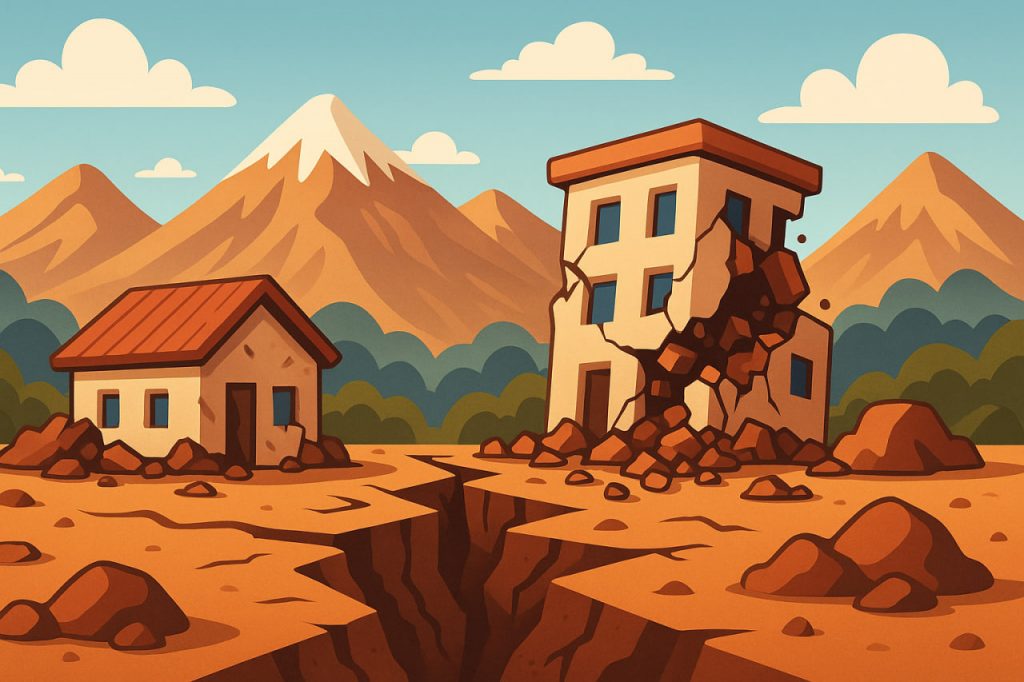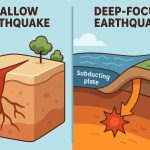Afghanistan is one of the most seismically active regions in Asia, and devastating earthquakes have been part of its history for centuries. To understand why these disasters are both frequent and destructive, scientists look at the country’s geological setting, tectonic forces, and socioeconomic vulnerabilities. Together, these factors explain why earthquakes in Afghanistan often cause such tragic consequences.
Geological and Tectonic Setting
Afghanistan lies at the junction of several major tectonic plates: the Indian Plate, the Eurasian Plate, and smaller microplates such as the Iranian and Afghan plates. The Indian Plate is continuously pushing northward into Eurasia at about 40–50 mm per year, creating massive geological stresses. This collision not only gave rise to the towering Himalayas but also fractured the Earth’s crust across Afghanistan. These fractures are expressed as fault lines, which are zones of weakness where earthquakes frequently occur.
Active Fault Zones
The country is cut by several significant fault systems, including the Chaman Fault in the southeast and the Hari Rud Fault in the northwest. These faults accommodate much of the tectonic movement and are responsible for some of the largest and most damaging earthquakes. Because these faults are both shallow and active, the shaking they produce can be especially destructive to buildings and infrastructure.
Why Earthquakes Are So Strong
Unlike deep-focus earthquakes that release energy far below the surface, Afghanistan often experiences shallow-focus earthquakes. These occur within the top 20 km of the Earth’s crust, meaning the seismic energy reaches the surface quickly and with greater intensity. The mountainous terrain also amplifies ground motion, increasing landslide risks in affected regions.
Human Vulnerability
The destructive impact of Afghan earthquakes is not only due to geology but also to social and economic conditions. Many homes are built from mud-brick or stone without modern engineering standards, making them highly vulnerable to collapse. Rural populations often live in isolated valleys, where access to rescue and medical services is difficult. Poverty and limited infrastructure mean recovery after major quakes is slow and challenging.
Recent Examples
In 2022 and 2023, Afghanistan suffered major earthquakes in the eastern provinces, each killing thousands and destroying villages. These events were linked to shallow ruptures along active faults. The combination of tectonic collision, fragile housing, and poor emergency response capacity explains why the toll was so high.
Future Outlook
Unfortunately, earthquakes will continue to strike Afghanistan because of its plate boundary location. Strengthening building codes, improving early warning systems, and investing in community preparedness could help reduce the loss of life in future events. International cooperation and disaster resilience programs remain crucial for protecting vulnerable communities.
Glossary
- Tectonic Plates – massive sections of the Earth’s lithosphere that move and interact, causing earthquakes, volcanoes, and mountain building.
- Fault Line – a fracture in the Earth’s crust where tectonic movement occurs.
- Shallow-Focus Earthquake – an earthquake that originates near the surface, often causing severe ground shaking.
- Seismic Activity – the frequency and intensity of earthquakes in a region.
- Disaster Resilience – the ability of a society to prepare for, withstand, and recover from natural disasters.


